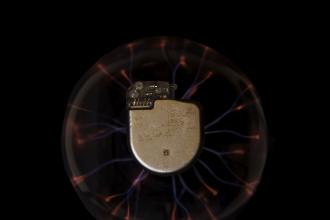Warning: “safety” scalpels are dangerous
WorkSafeBC recently introduced regulations that “safety engineered scalpels” have to replace conventional scalpels—though there is no evidence that they reduce injuries. This regulation was recently implemented across the Interior Health Authority and will soon be coming to the other health authorities.
Contrary to their name, these devices are actually more dangerous. First, the protective plastic sheath is very difficult to manipulate back and forth, especially with greasy gloves on, risking injury to physicians and nurses. Second, the sheath has to be advanced and retracted multiple times during an operation, distracting the surgeon from the patient’s operation. Last, and most importantly, visualization of the blade is unacceptably obscured by the plastic sheath. This is illustrated in the accompanying pictures. The picture on the left is the visualization of the carpal ligament with a standard scalpel; and on the right with the so-called safety scalpel. Both scalpels are placed with the blade at the same level on the tissue and at the same angle of inclination.
WorkSafeBC has indicated that these scalpels do not have to be used if they are deemed “not clinically appropriate.” These will soon be coming to your health authority. For the sake of your patients and colleagues, be sure to be proactive in the process of establishing “clinical appropriateness” (or lack thereof) of these dangerous devices.
—Hamish Hwang, MD
Vernon Jubilee Hospital, Deputy Chief of Surgery

